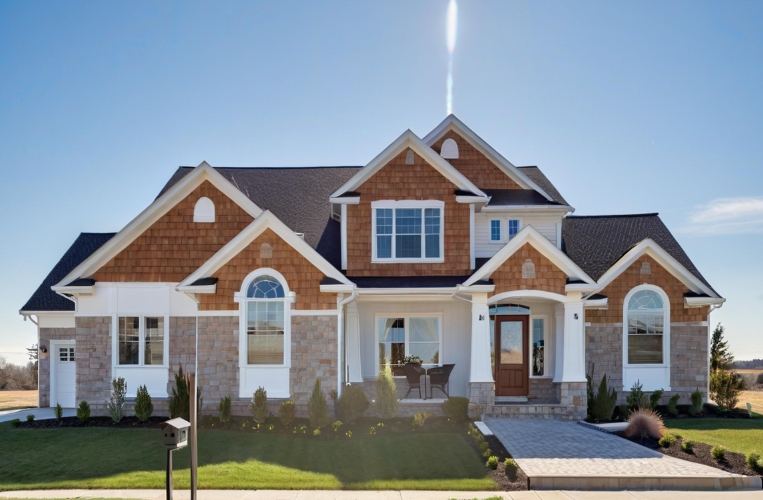How long will a steel frame house last?
Summary of the service life of steel structure houses
The theoretical life span of steel structure houses can reach 50-200 years, but in actual use, it needs to be guaranteed by high standard materials, standardized construction and regular maintenance in order to realize long-term safe living.
1. Theoretical life range
Main structure life
The theoretical life of the main structure (light steel keel) of light steel villa is generally 50-100 years, and high quality galvanized steel (galvanized layer ≥275g/㎡) can reach 70-100 years, and part of the steel structure coated with aluminum-zinc-plated AZ150 can even reach more than 200 years14. Some steel structures with aluminum galvanized AZ150 coating can even have a theoretical life span of more than 200 years.
Conventional concrete buildings have a life span of about 50-100 years, and lightweight steel structures perform better under the same conditions.
Difference in life span of supporting materials
Decorative layers (e.g. colored steel sheets, asphalt shingles) have a shorter life span, usually 20-50 years, and need to be regularly maintained or replaced.
Insulation materials (rock wool, polystyrene foam board) can maintain their performance for 30-50 years and need to be renewed after aging to maintain the building function.
2. Core factors affecting longevity
Material quality
Steel anticorrosion treatment: galvanized layer thickness (≥ 275g / ㎡) and aluminum zinc plating process can significantly delay rust and corrosion, extending the life to more than a century.
Selection of auxiliary materials: poor-quality insulation materials or waterproof layer is easy to aging and cracking, accelerating structural damage.
Design and Construction
Structural design needs to comply with seismic and wind resistance standards to avoid localized deformation due to stress concentration.
Construction errors (e.g. loose connectors, tilted keel) will reduce overall stability and shorten service life.
Environment and Maintenance
High humidity, salt spray or acid rain will accelerate the corrosion of steel, which requires additional anti-corrosion coating or regular maintenance.
Regular inspection of roof waterproofing, corrosion of the keel and timely repair of damaged areas can extend the life of 20-30 years.

3. Maintenance Recommendations
Regular maintenance measures
Every 3-5 years, check the light steel keel connectors and anti-corrosion layer, and immediately sand and paint when rust is found.
Every 10 years Renew the decorative materials of the external wall (e.g. replace damaged color steel plates) to avoid rainwater infiltration into the wall.
Norms of use
It is forbidden to remove the load-bearing wall or drill holes to destroy the integrity of the keel.
Keep the interior ventilated and dry, with humidity controlled at less than 60% to reduce the erosion of steel by condensation.
4. How to extend the service life of light steel villa?
I. Choose high standard anti-corrosion steel
Priority is given to the aluminum-zinc-plated steel with galvanization ≥ 275g/㎡ (such as AZ150 coating), whose anticorrosion performance can be maintained for more than 35 years, and the theoretical service life is more than 100 years.
II. Strengthen the protection of key parts
Adopt double-layer coating of epoxy zinc-rich primer + polyurethane topcoat for connectors, bolts and other vulnerable parts, and reapply the coating once every 10-15 years.
Add zinc chrome yellow primer for emergency treatment in coastal or high humidity areas, and find that rust spots need to be sanded and repaired within 24 hours.
III. Structural Physical Examination and Reinforcement
Use magnetic flaw detector to detect micro-cracks in light steel keel every 5 years, laser level to calibrate verticality deviation (required ≤3‰), and find foundation settlement (diagonal error of doors and windows >5mm) for immediate treatment.
IV. Maintenance of roofing and external wall system
Clean the leaves on the roof in spring and check the locking fasteners, spray nano thermal insulation coating (reflectivity ≥ 85%) in summer, dredge the drainpipe and reinforce the wind-resistant clamps in fall.
In the southern region, test the moisture permeability of breathing paper (≥800g/m2-24h) every year, and in the northern winter, disable the external wall washing equipment to prevent freezing and cracking.
V. Humidity and Ventilation Control
Maintain indoor humidity ≤60%, and start dehumidification system when the humidity of rock wool filling layer >12% to avoid condensation erosion of steel.
VI. Surrounding Environment Control
The root system of trees is >3m from the foundation, and that of shrubs >1.5m, to prevent the root system from damaging the foundation.
Diffuser slope gradient ≥5% to ensure no water accumulation after heavy rainfall.
VII. Depth Inspection and Restoration
Every 5 years, a professional team is commissioned to conduct drone roof scanning, infrared thermography cold bridge testing, and update the aging insulation materials (rock wool life span of 30-50 years).
VIII. Doors, Windows and Hardware Maintenance
Broken-bridge aluminum window seals are maintained with silicone oil every year, hinges are dripped with -40℃ low-temperature lubricant, and Low-E glass coating needs to be re-coated if the wear and tear is >5%.


